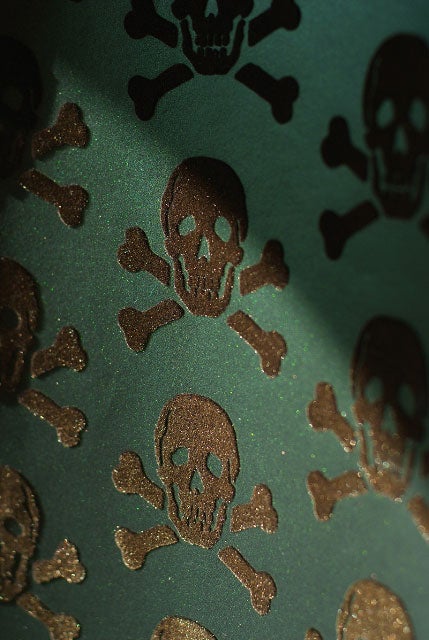The weird and wonderful world of wallpaper

Your support helps us to tell the story
From reproductive rights to climate change to Big Tech, The Independent is on the ground when the story is developing. Whether it's investigating the financials of Elon Musk's pro-Trump PAC or producing our latest documentary, 'The A Word', which shines a light on the American women fighting for reproductive rights, we know how important it is to parse out the facts from the messaging.
At such a critical moment in US history, we need reporters on the ground. Your donation allows us to keep sending journalists to speak to both sides of the story.
The Independent is trusted by Americans across the entire political spectrum. And unlike many other quality news outlets, we choose not to lock Americans out of our reporting and analysis with paywalls. We believe quality journalism should be available to everyone, paid for by those who can afford it.
Your support makes all the difference.In his latest book, At Home: A Short History of Private Life, Bill Bryson takes his reader on a tour of private life through the ages, revealing as he does that, historically, our home life has been at best unimaginably uncomfortable, and at worst a death-trap. Wallpaper, he tells us, played its role in this, being laden with arsenic until the late 19th century and often smelling of garlic when damp. Meanwhile, green wallpaper was said to stop bed-bugs.
Search for the perfect furniture with The Independent house and home database, powered by mydeco.
Thankfully, since then, our homes have become vastly more comfortable and our attitudes and approaches to wallpaper increasingly sophisticated. "Over the last few years we have witnessed developments in printing technology and a lowering of prices, which has meant that all sorts of designs can be more easily produced as wallpaper," says Allison Grant.
Allison founded The Collection, Paris, in 2003 as a way of showcasing talented young British designers to a French audience and now offers a unique range of designs from talents across Europe, including some quite mind-boggling wallpaper creations.
"A few years ago wallpaper was seen as old-fashioned and now the reverse is true," she says. "In recent years we’ve seen designers pushing the boundaries and moving away from the simple repeat pattern on the wall. I'm thinking of designers like Lene Toni Kjeld with 'transitional wallpaper', where one pattern merges into another and changes as you advance along the wall; or the move away from 'flat' wallpaper towards three dimensional work like Tracy Kendall’s jigsaw wallpaper or Mio’s 3D wallpaper tiles."
Wallpaper, she says, is increasingly used as an art piece in the home, with many companies now offering "made to measure" solutions for the wall as a way of giving greater flexibility to wallpaper artists, designers and individuals alike. Meanwhile, new techniques are emerging all the time.
At Beware the Moon, father and daughter team, John and Louise Wakefield conduct a very non-digital approach to their wallpapers, using hand-drawings, endless cut-outs, airbrushes, pencils, rubbers and Stanley knives to create the designs. They employ various specialists to help them develop innovative effects and were the first in the industry to use glitter on wallpaper (a process that took many months to perfect).
The range includes iridescent inks that change colour as you walk by and, this September two holographic wallpapers, which "throw shapes at you like a hall of mirrors", will be added to the collection. Various hair-brained experiments are always on the go, says Louise, with an entirely flock-velvet wall with recessed gold motifs, one of their more outlandish (and as yet failed) ventures to date.
Catherine Hammerton, a London-based textile designer, creates bespoke wallpaper that has been likened to a Saville Row suit for interiors. Her Flutter wallpaper is made from hand-cut paper ginko leaves stitched to a traditional wallpaper background; her trailing flora and foliage Bramble wallpaper is a wild textured design constructed from laser-cut flora paper shapes and stitched to a traditional wallpaper; and her signature Collection wallpaper is constructed from original love letters, found papers, fabrics and charms.
Dutch artist/designer Inke Heiland has an enduringly popular range of animal silhouettes, which are hand-cut from vintage 60s and 70s wallpaper in limited editions.
Meanwhile, Jenny Wilkinson lets you get involved with Wallpaper-By-Numbers, which is hung like conventional wallpaper, but can then be coloured in using paints, colouring pencils or felt tip pens. The wallpaper and its number guides allow you to choose whether to colour a small section, the whole thing or just leave it blank, adding an interactive spin to the whole process.
If that wasn't enough, in his most recent television series, Heston Blumenthal invited guests to enjoy his lickable wallpaper.
It all makes you wonder what the future is for wallpaper. How can three dimensional, interactive or transitional wallpapers be topped? And are there any suprises left?
According to Allison, yes. "I think there will continue to be surprises in the way we use wallpaper," she says, "I think we will see more and more customisation of wallpaper and that, with an increased confidence in our ability to decorate our own homes, we will have a surge of creativity!"
We've come along way since the arsenic-laden wallpapers of our ancestors, and it seems as though we yet have some way to go. Watch this space.
Emily Jenkinson is interiors writer for furniture and interior design website mydeco.com.
Join our commenting forum
Join thought-provoking conversations, follow other Independent readers and see their replies
Comments